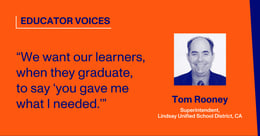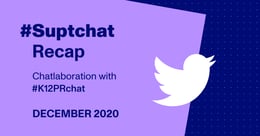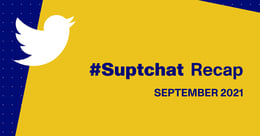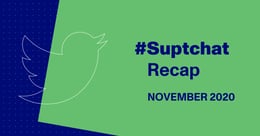
Leading School Improvement Online: How One Baltimore Team is Keeping Up Their Momentum
“We had tremendous momentum,” said J.D. Merrill, Assistant Principal of Elmer A. Henderson, A Johns Hopkins Partnership School (Henderson-Hopkins).
For the past few years, the leadership team at Henderson-Hopkins has been making strides in their three-pronged approach of trying to improve the school. “We were really excited to have more great results this year,” J.D. added, “and then, on March 12th at four o’clock, we found out that we weren’t coming back to school.”
Throughout our conversation with J.D., what was striking was his longstanding commitment to the wider Baltimore community. A native of the city, he began his career as a teacher at the same public high school that he attended, until moving to a district administrative role. “It was an incredible experience to be teaching alongside the same folks that taught me, and then I had the opportunity to work at the district level and help support the chief of staff’s office in monitoring and managing the day-to-day operations of the district,” he said.
This administrative experience gave him a close perspective on some of the challenges faced by the school system. At the time, in Maryland, the public school funding formula was up for review. J.D. felt as though teachers and students needed to have a seat at the table when decisions were made about the future of public schools, and decided to run for state senate in 2018. After the race, he decided to return to working directly with students and families in his community. This move was inspired by the school’s principal, Peter Kannam, who made the similarly rare move from a policy-making role to a ground-level role. “I was really inspired by that leadership move, and I wanted to be a part of it, and so I’ve been serving as his assistant principal for the last two years,” J.D. said.
Gaining momentum
What J.D. and the rest of the leadership team at Elmer A. Henderson decided when they started at their school in East Baltimore was to knock on doors to introduce themselves to hear directly from the community what they were looking for in their neighborhood school.
There’s been this movement towards the community school model, this idea that school should be more than just places of learning for students, but they should provide wraparound services for students and families,” he explained, “and our families wanted after school activities, they wanted programming for parents, they wanted us to expand our meal programs, so we did all those things.
Elmer A. Henderson was born out of a need to support the underserved existing community of East Baltimore, with the aim of integrating innovative education with community values and resources under the guidance of Johns Hopkins University and Johns Hopkins School of Education. Despite high expectations, however, the charter-like school had been underperforming. Now the new leadership team is trying to improve the school with a three-phase approach:
- Implementing high-quality curriculum, with fidelity
- Providing high-quality professional development for staff
- Providing whole-child support, such as mental health supports and after-school programs
Two years later, these efforts were beginning to pay off. They were recognized as the most improved school in Baltimore last year. They also became a top-five school in the district for African-American student achievement, a result his team is especially proud of. They also doubled the number of their eighth-graders going to tier-one high schools, indicating that his school is significantly increasing their students’ chances of getting into college.
Pivoting
Indeed, as J.D. said, they had “tremendous momentum” before school closures had to be announced, due to the pandemic. Abruptly, the leadership team had to redirect their efforts to figure out how to pivot to distance learning while adhering to their community school model:
How can we take the momentum and the principles of what we were doing well in-person, and recreate it in the virtual environment? And all of those things that I said about being a hub for our community and being a community school, how can we do that and maybe even do it even better during this pandemic?
Keeping these priorities in mind, they developed a three-pronged strategic response:
- Live online instruction, as aligned to the existing curriculum as possible
- Weekly distribution of meals
- Health supports for their families
Johns Hopkins University provides a hotline service for the school’s families to receive health-related guidance from a registered nurse. The school also launched a wellness website available here. With support from Johns Hopkins University, Elmer A. Henderson has also partnered with organizations such as the Maryland Food Bank, Baltimore City Schools, and World Central Kitchen to distribute eight thousand pounds of food per week, including non-perishables, fresh fruits, and vegetables, as well as 2000 frozen meals. J.D. also described the school’s unique food delivery program that distributes food to families of essential workers as well as those with limited transportation access or healthcare concerns.
For about 40% of our students, their daily attendance percentage is declining over the last three weeks. At first, this was new and exciting. You could see your friends in your online classroom, and now students are realizing that this is real work. It’s business as usual, and it’s much easier to close your laptop and not engage than it would be in class.
As they move forward with distance learning long-term, J.D. contends that there needs to be a better way for parents to know how their student is doing with distance learning. About 70% of the school’s parents are essential employees and are working during the pandemic, so many students are being supervised by other relatives. This is why J.D. stressed the importance of a real-time feedback loop for parents to know what their children are doing at home.
The school is finding ways to leverage technology to alleviate parental concerns and boost student engagement as learning continues to occur at home. J.D.’s team is partnering with a developer to build a text alert system for parents that will notify them about how their child is engaging in their online class. “Many of our teachers are home with their own families, and in addition to planning, teaching live class, and grading, it’s very difficult for them to contact, in some cases, a hundred families a day and let them know whether or not their kid was engaged that day. We’re trying to support the work our teachers are already doing by designing this automatic alert system.”
The school is also on the lookout for online tools to provide their students with chat-based support at home. “Our teachers have built strong relationships with our students that they’re able to tap into and leverage in the in-person environment, but you can’t really recreate that type of access realistically for teachers in a remote environment, and so being able to provide students with 24-hour a day chat-support.”
He stated, in reference to Paper’s educational support system (ESS):
I think it could be a game-changer for students and families, and would help relieve some of the pressure on the assigned instructor to feel like they have to be available to students around the clock.
An equally important piece in the shift to distance learning is addressing the novel challenges teachers are facing. The leadership team at Henderson-Hopkins is aiming not just to provide them the tools to succeed in the shift, but also the leeway to make mistakes and manage their own struggles at home.
When the school closed its doors in March, the leadership team created new staff positions called Directors of Remote Learning. “We want to lift up our teachers who are comfortable with online learning to support their colleagues. So we are stipending four of our staff to support their colleagues in implementing and executing remote learning,” explained J.D.
Elmer A. Henderson is reimbursing teachers a hundred dollars monthly for using their personal devices and internet for remote instruction. “It’s a small amount, but it recognizes the very real personal sacrifices that our teachers are making,” said J.D. They’re also allowing teachers to schedule when their live online instruction occurs, allowing them the flexibility to choose when their team meetings are and are also communicating teachers’ boundaries and expectations to parents through town hall meetings and conversations.
Elmer A. Henderson has made remarkable strides in the past few years through their dedication to the students and community they serve. J.D. concluded that recent circumstances have not shaken this momentum, and instead have presented them with the opportunity to be innovative in their approaches: “I think that there are lessons that have been learned in this event that will inform what we do in-person even better.
The way that we handle snow days or sick days or after-school or summer school will never be the same. We will no longer tolerate the fact that students experience the summer-slide, which disproportionately affects low income and minority students.
Certainly, for Elmer A. Henderson, the momentum’s anything but lost.






